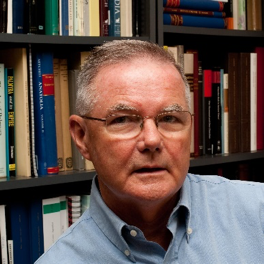Aleppo: savaged but not lost
On the 14th of November 2017, the New South Wales Chapter of the Australian Institute of International Affairs invited former Australian diplomat Dr Ross Burns to share his insights on the current state of Aleppo.
Ross said that now the historically rich city is no longer in the media spotlight, it is a significant time to reflect on what happened, and consider what is required for recovery. He focused on the four sections of the city where the conflict inflicted the worst damage, mostly in central east Aleppo and surrounding the citadel.
The epicentre of fighting had been within the walled ancient city. Unfortunately the rebel forces utilised monuments and culturally significant structures such as mosques and minarets as both observation posts and propaganda tools for engagement, showing complete disregard for the need to preserve their history. Minarets are beautiful and graceful structures, but are natural targets because of their height and the tactical advantage of those occupying them. Many were destroyed in the fighting, most notably the Great Minaret attached to the Great Mosque of Aleppo. Weapons such as tunnel bombs were also used, leaving visible and ugly eruptions all over the city – scars that are particularly notable when observing from above.
Sadly, many of the ancient buildings of Aleppo and Palmyra are now piles of rubble, some seemingly beyond repair. But Syrian civilisations throughout history have built upon past destruction and may do so again. A ground for optimism is that Western reports of the extent of destruction tend to be exaggerated.

The Syrians are not in total despair about the possibility of rebuilding some cultural structures, both in Aleppo and Palmyra. Ross emphasised that the first and most important step is to re-settle the people of Aleppo, and provide essential services such as water, food, hospitals and education. Only then can work on restoring monuments begin. The process may take years. But among the Syrians are some of the most renowned stonemasons in the world. They are now waiting for the right living conditions and facilities to return before going to work.
Recently the international community began to lay foundations for the reconstruction of Syria. At the Asia-Pacific Economic Cooperation Summit in Vietnam in November 2017, Presidents Trump and Putin came to an agreement about their common ambition to move forward and end the war in Syria. This subject was touched on during question time, in addition to the role UNESCO will play in the restoration.
Mitchell Travers
AIIA NSW Intern